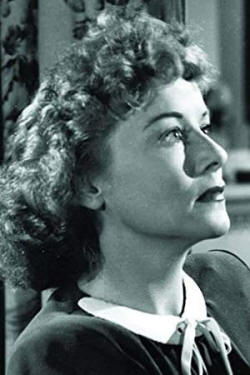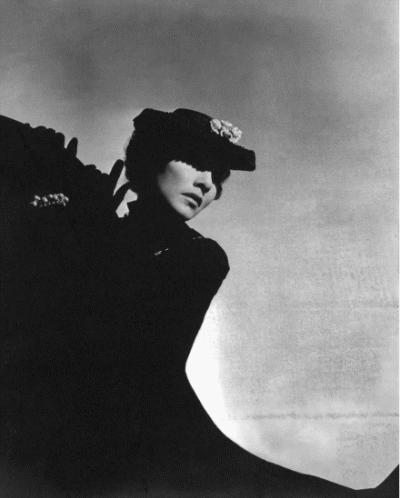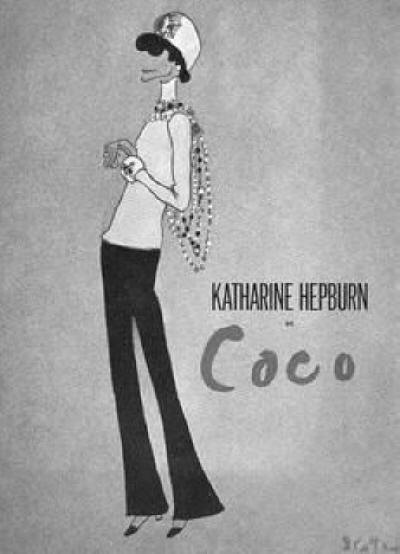Queer Places:
1610 Winona Blvd, Los Angeles, CA 90027
 Adalyn
or Adelaide Doyle aka Eve
March (September 27, 1910 - September 19, 1974) was an actress, known for How Green Was My Valley, The Curse of the Cat People (1944), written by
DeWitt Bodeen, Killer McCoy, Adam's Rib (1949), with Katharine Hepburn and
Judy Holliday, The Sun Shines Bright, and Canon City (1948).
Katharine Hepburn did not
make her home with Spencer Tracy but rather within a community of women.
Laura Barney Harding, Emily
Perkins,
Constance Collier,
Eve March,
Frances Rich,
Phyllis Wilbourn, and finally
Cynthia McFadden were the ones to provide
anchor, solace, and family.
Adalyn
or Adelaide Doyle aka Eve
March (September 27, 1910 - September 19, 1974) was an actress, known for How Green Was My Valley, The Curse of the Cat People (1944), written by
DeWitt Bodeen, Killer McCoy, Adam's Rib (1949), with Katharine Hepburn and
Judy Holliday, The Sun Shines Bright, and Canon City (1948).
Katharine Hepburn did not
make her home with Spencer Tracy but rather within a community of women.
Laura Barney Harding, Emily
Perkins,
Constance Collier,
Eve March,
Frances Rich,
Phyllis Wilbourn, and finally
Cynthia McFadden were the ones to provide
anchor, solace, and family.
Adalyn E. Doyle was born on September 27, 1910 in Fresno, California, the
daughter of William P. and Adelaide L. Doyle. Despite
his annoyance over Sylvia Scarlett (1935), Leland Hayward was still around—he flew
Alice Palache up to see her aunt in Carmel for a few days—but that didn’t stop
Hepburn from assembling a loyal sorority around her who essentially lived,
worked, and spent most of their time together. Among them were
Trudy Wellman, an extra who’d
worked in several George Cukor
films and for whom Kate paid the bills when she was briefly hospitalized, and
the Doyle sisters, Adalyn, Catherine L., and twins Patsy (Patricia A.), and Mimi
(Wilhelmina B.), daughters of a prominent Los
Angeles attorney, all of whom variously worked as Kate’s stand-in.
With Adalyn, Hepburn grew especially close, insisting that her friend be
with her on the set at all times. So ubiquitous did Adalyn become that the
press took to calling her “Kate Hepburn’s good-luck girl.” Known as “Murph,”
Adalyn Doyle was a wisecracking, boyish, freckle-faced Irish girl, whose
ambition to become a full-fledged actress impressed Kate. Accordingly, the
star helped Murph land a part in Finishing School (1934), RKO’s adaptation of the
play These Days, as well as other roles. For Home Sweet Home, a Broadway
tryout being staged in Greenwich, Connecticut, Murph changed her name to Eve
March—a tribute to her favorite stand-in part, Jo March in Little Women, and
to the woman who played her. For Murph’s East Coast stage debut, Kate asked
her parents to drive down from Hartford to cheer her on.
Once again, in her relationships with men and women, Kate had behaved
according to pattern. Just as she had after her break with
Phelps Putnam, she followed her
split with Howard Hughes by
retreating to the comforting embrace of a community of women. First, it was
Eve “Murph” March who was her most frequent companion. “For several weeks this
season,” one reporter observed, before MGM leaned in to control what was
written, Kate “had as her houseguest the very pretty young woman who serves as
her stand-in and to whom she is now quite devoted.” Whether there was an
actual romance with Murph, who was touring in a repertory version of Stage
Door, is unclear.

Eve March for Vogue, 1937, Photo Horst P.Horst

In 1938 Eve March married actor Damian O'Flynn in New York. She was on
Broadway with "Here Come the Clowns" and he had been a year before in
"Barchester Towers", and was later in several films. Later March married Ian
MacDonald, a surgeon and oncologist at the University of Southern California, and borne two
children (Katherine and Bruce). She named her daughter after Kate, who also served as the girl’s
godmother. Even if married, Murph would remain in Hepburn’s orbit; in Adam’s
Rib, she’d play her secretary.
Coco was a 1969 Broadway musical with a book and lyrics by Alan Jay Lerner and music by André Previn, inspired by the life of
Coco Chanel. It starred Katharine Hepburn in her only stage musical.
The costume were by Cecil Beaton.
Kate called Noelle’s
hairdo too “lesbian.” Her real objection, Beaton thought, was that the younger
woman’s hair made her own look “skimpy.” Ironically, the actress playing
Noelle, Gale Dixon, was so “nauseatingly sycophantic” (Beaton’s words) that some in the
company whispered she was Kate’s girlfriend. The fact that Hepburn had secured
a small part for Eve March in the show also caused some gossip.
For the next decade or so, the core group around Hepburn included old faithfuls like
Laura Harding, Eve March, and Fran Rich, as well as newer friends like Sue
Seton and Laura Dubman Fratti. After
Katharine Cornell died in 1974,
Nancy Hamilton also moved back into Hepburn’s inner circle. Sharing a love for
chocolate, the two women could consume several pans of Kate’s famous brownies
in one sitting. When Nancy died in 1985, her will specified that Kate be given
five hundred dollars’ worth of the best dark chocolate.
Among the new faces were the journalist Katharine MacDonald (daughter of
Eve March) and the actress-director Valentina Fratti (daughter of Laura Dubman
Fratti), both of whom called Hepburn godmother. A close bond was also shared
with Emily King, Laura Harding’s grandniece.
Kate’s intimates were quite a diverse lot. Some had been married with
children (Eve March, Laura Fratti, Norah Moore) while others were lifelong
singles (Nancy Hamilton, Fran Rich, and most of the women Kate and Nancy
socialized with on Martha’s Vineyard). Of them, only
Sally Lapiduss would ever
publicly identify as lesbian, though Hamilton’s relationship with Katharine
Cornell was well-known in theatrical circles.
Eve March died on September 19, 1974 in Hollywood, California.
My published books:


BACK TO HOME PAGE

- Mann, William J.. Kate: The Woman Who Was Hepburn (p.238). Henry Holt
and Co.. Edizione del Kindle.
- Dictionary of Women Worldwide: 25,000 Women Through the Ages
 Adalyn
or Adelaide Doyle aka Eve
March (September 27, 1910 - September 19, 1974) was an actress, known for How Green Was My Valley, The Curse of the Cat People (1944), written by
DeWitt Bodeen, Killer McCoy, Adam's Rib (1949), with Katharine Hepburn and
Judy Holliday, The Sun Shines Bright, and Canon City (1948).
Katharine Hepburn did not
make her home with Spencer Tracy but rather within a community of women.
Laura Barney Harding, Emily
Perkins,
Constance Collier,
Eve March,
Frances Rich,
Phyllis Wilbourn, and finally
Cynthia McFadden were the ones to provide
anchor, solace, and family.
Adalyn
or Adelaide Doyle aka Eve
March (September 27, 1910 - September 19, 1974) was an actress, known for How Green Was My Valley, The Curse of the Cat People (1944), written by
DeWitt Bodeen, Killer McCoy, Adam's Rib (1949), with Katharine Hepburn and
Judy Holliday, The Sun Shines Bright, and Canon City (1948).
Katharine Hepburn did not
make her home with Spencer Tracy but rather within a community of women.
Laura Barney Harding, Emily
Perkins,
Constance Collier,
Eve March,
Frances Rich,
Phyllis Wilbourn, and finally
Cynthia McFadden were the ones to provide
anchor, solace, and family.



